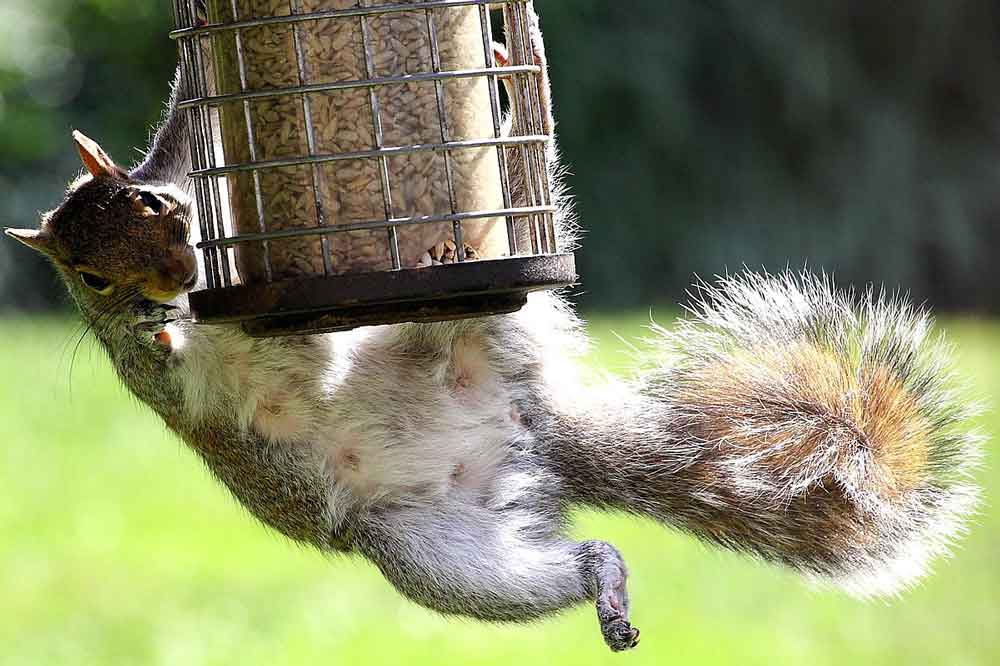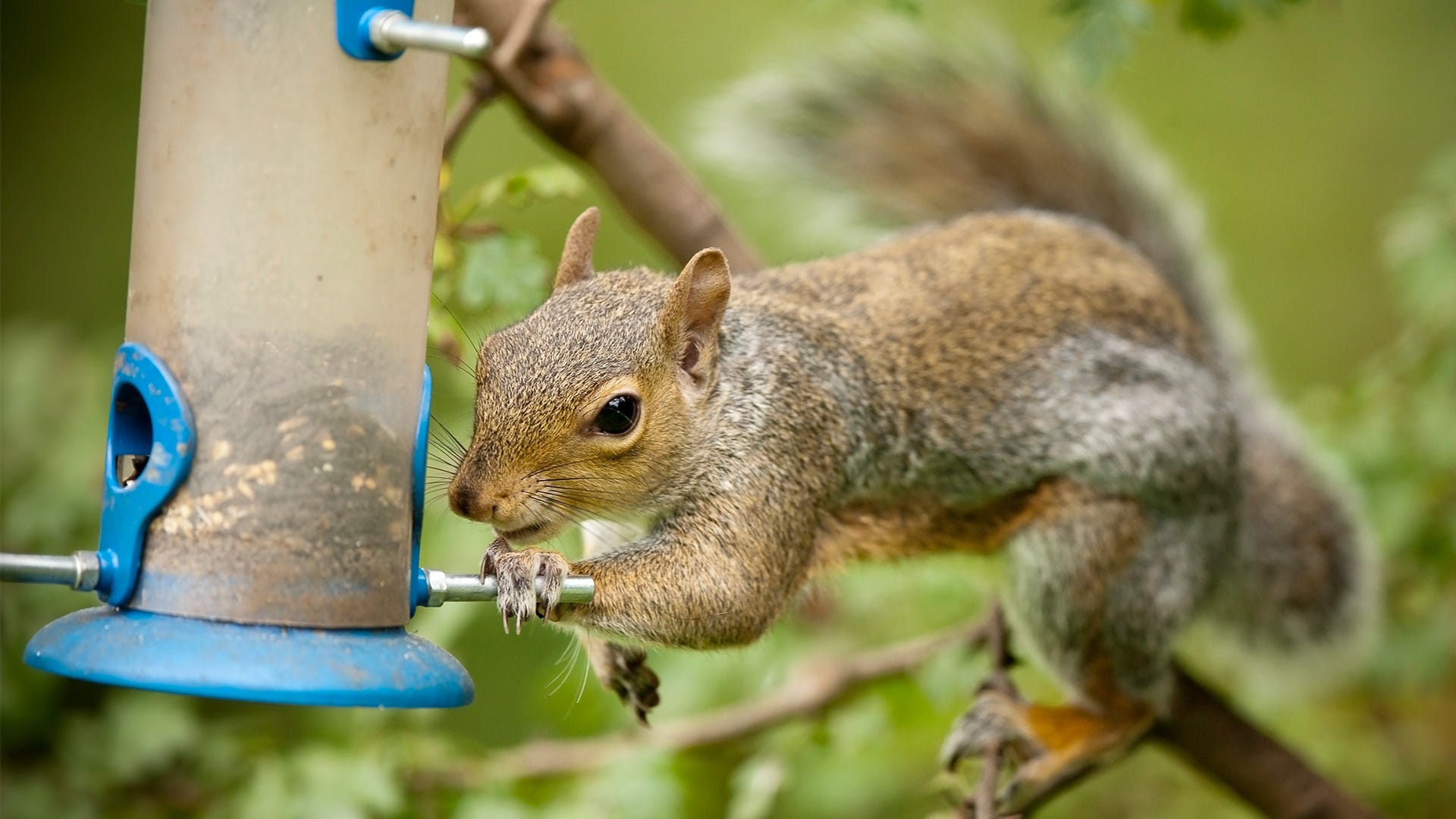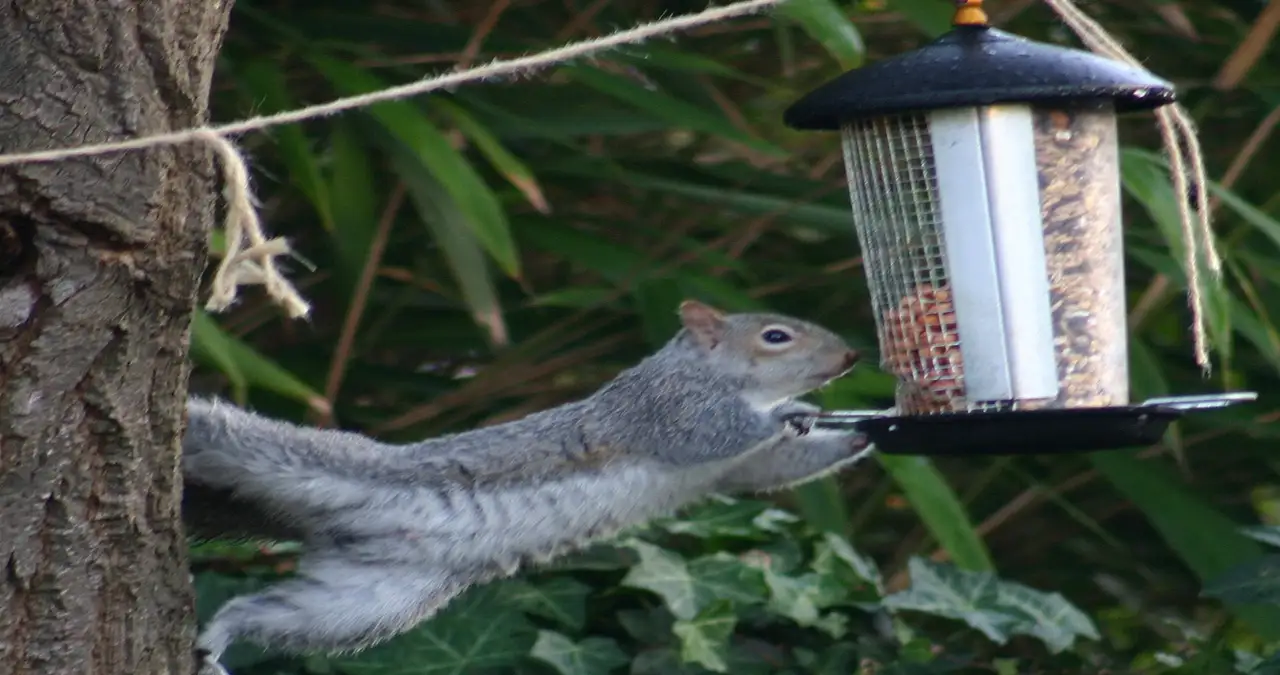Discover everything about squirrel proof bird feeders. Learn how to choose, install, and maintain the perfect feeder to keep birds happy and squirrels away. Easy and expert advice inside!
Bird watching is one of life’s simple pleasures. There’s something soothing about watching colorful birds flit around your backyard, especially when you know you’re helping them thrive. But if you’ve ever tried to keep a bird feeder in your yard, you know there’s a recurring problem that can ruin the fun—squirrels. These clever little creatures are notorious for raiding bird feeders, scaring off birds, and emptying your feeder before the birds even get a nibble. That’s where a squirrel proof bird feeder becomes essential.
Why You Need a Squirrel Proof Bird Feeder
If you’ve invested in a bird feeder, chances are you’re doing it to attract and nourish birds. The unfortunate reality is that squirrels are just as attracted to birdseed as birds are. They often dominate the feeder, scaring birds away and consuming large quantities of food.
Aside from just being a nuisance, squirrels can also cause damage. They can chew through plastic and even metal parts, ruining your feeder. A squirrel proof bird feeder isn’t just a luxury—it’s a necessity if you want a low-maintenance, bird-friendly garden. These feeders are specially designed to keep squirrels at bay while still allowing birds easy access to food.
How Do Squirrel Proof Bird Feeders Work?
At first glance, squirrel proof bird feeders might look like your typical bird feeders, but there are a few key differences. Most of these feeders use clever mechanisms to detect the weight of a squirrel, which causes feeding ports to close. Others have cages that physically block squirrels from reaching the seed.
Another popular method involves using baffles—domes or cones that prevent squirrels from climbing or jumping onto the feeder. Some feeders even spin when a squirrel climbs on them, gently tossing the critter off without harm. It sounds funny, but it works incredibly well and provides some entertainment, too.
Types of Squirrel Proof Bird Feeders
There’s no one-size-fits-all when it comes to a squirrel proof bird feeder. Depending on your yard, bird population, and even the species of squirrels in your area, one type might work better than another. Here’s a breakdown of the most common types:
Weight-Activated Feeders
These feeders are engineered to respond to weight. They typically have a spring mechanism that closes off access to seed ports when something heavier than a bird lands on them. Birds can feed as usual, but when a squirrel hops on, the ports snap shut. It’s an ingenious solution that really works.
One of the best things about weight-activated feeders is that they’re incredibly low maintenance. Once set up, they do most of the work for you. You just fill them up and let them do their job. No complicated gadgets or extra tools needed.
Caged Feeders
Caged squirrel proof bird feeders are surrounded by a sturdy metal cage. The openings are wide enough for small birds to fly through but too small for squirrels. These feeders are great if you want to attract smaller birds like finches or chickadees without worrying about squirrels taking over.
They also help deter larger birds that might bully smaller ones. It’s a win-win if you’re trying to maintain a peaceful feeding environment. Make sure to get one with rust-resistant material for longer life and cleaner feeding.
Spinning or Motorized Feeders
These are the high-tech heroes of the squirrel proof bird feeder world. When a squirrel hops onto the perch, a motor activates and starts to spin. The sudden motion causes the squirrel to lose its grip and fall off. Don’t worry—it doesn’t hurt them; it just startles them enough to discourage future attempts.
Although these can be a bit more expensive, they’re worth every penny if you deal with persistent squirrel invasions. Plus, they often come with other premium features like weather-resistant materials and easy-clean designs.
Dome or Baffle-Protected Feeders
Domes and baffles are additional accessories that can be added to existing feeders to keep squirrels at bay. They work by creating a slippery or angled surface that squirrels can’t grip or climb. These are particularly useful if you already have a favorite feeder and don’t want to replace it entirely.
They’re easy to install and very cost-effective. However, they might not be as foolproof as weight-activated or motorized options, so consider combining them with other deterrents.
Features to Look for in a Squirrel Proof Bird Feeder

Not all feeders are created equal, so here are some expert-recommended features to look for when choosing your squirrel proof bird feeder:
Durable Construction
Go for materials like powder-coated steel, metal mesh, and UV-resistant plastics. These materials are less likely to be chewed through or damaged by weather. Remember, squirrels are relentless chewers—cheap plastic won’t last.
Investing in a well-built feeder means you’ll save more in the long run. It’s tempting to go for the cheapest option, but if it can’t stand up to the elements or hungry squirrels, you’ll be back to square one.
Easy to Clean
Bird feeders can get messy fast, especially when squirrels knock them over or spill seed everywhere. Choose a feeder with parts that are easy to disassemble and clean. Moldy or old seed can be harmful to birds, so regular cleaning is a must.
Some feeders even come with dishwasher-safe parts, which makes upkeep a breeze. Hygiene matters just as much as functionality in keeping your feathered friends healthy.
Seed Capacity
Think about how many birds you expect to feed. A larger capacity feeder means fewer refills, but it should still be squirrel-proof. Make sure the design doesn’t compromise on security just to hold more seed.
Also, consider the type of seed it holds. Some feeders are designed for specific seed types, which might attract different species of birds. Variety in seed can make your garden more vibrant with bird activity.
Placement and Mounting Options
Some feeders are designed to hang from branches, while others mount on poles. Make sure your feeder is compatible with where you want to place it. Squirrels are excellent jumpers, so avoid placing feeders too close to trees or structures they can leap from.
Proper placement is key. Even the most squirrel proof bird feeder won’t work if you put it in a squirrel superhighway. Give it some space and elevation for best results.
Tips for Installing and Maintaining Your Feeder
Even the best squirrel proof bird feeder can fail if not installed or maintained properly. Here are a few expert tips:
- Place feeders at least 10 feet away from trees, fences, or any jumping platforms.
- Use a pole with a squirrel baffle for added protection.
- Regularly clean your feeder and replace old seed.
- Rotate feeders or change seed types to keep birds interested and squirrels guessing.
Keeping the feeder full is also essential. Hungry birds won’t come back if they find an empty feeder too often. But make sure it’s not too full, either—squirrels will see that as a buffet.
Benefits of a Squirrel Proof Bird Feeder

Installing a squirrel proof bird feeder does more than just deter squirrels. It enhances the overall bird-watching experience. You’ll enjoy longer viewing times, a greater variety of birds, and fewer interruptions.
It also saves you money. No more constantly refilling feeders that squirrels empty in a day. Less seed waste means more consistent feeding and happier birds.
You’re also contributing to local wildlife health. Birds need consistent food sources, especially during harsh weather. A well-maintained squirrel proof feeder provides that support.
Common Mistakes to Avoid
Here are a few pitfalls that could undermine your squirrel proof setup:
- Placing feeders too close to trees or fences.
- Using the wrong type of seed (sunflower seeds attract squirrels).
- Choosing a poorly constructed feeder.
- Ignoring maintenance like cleaning or refilling.
Avoid these mistakes, and your squirrel proof bird feeder will be a long-term win for both you and your backyard birds.
FAQs
What is the best squirrel proof bird feeder? The best squirrel proof bird feeder is one that combines weight-activated mechanisms with durable materials and easy maintenance. Popular options include the Brome Squirrel Buster series and Droll Yankees Flipper.
Do squirrel proof feeders really work? Yes, if installed and maintained properly. They use smart design features like weight detection, cages, and baffles to deter squirrels while still allowing birds to feed freely.
Can squirrels damage bird feeders? Absolutely. Squirrels are notorious for chewing through plastic, bending metal, and even destroying entire feeders. That’s why it’s crucial to use feeders specifically designed to resist their attacks.
How far should a feeder be from trees to be squirrel proof? At least 10 feet. Squirrels can leap surprisingly far, so give your feeder plenty of clearance from any nearby trees, fences, or roofs.
What kind of bird seed deters squirrels? Safflower seeds are less attractive to squirrels but still loved by many birds. You can also buy seed blends treated with spicy additives—birds don’t mind the heat, but squirrels hate it.
Conclusion
A squirrel proof bird feeder is more than just a handy garden gadget—it’s a game changer for any bird enthusiast. It brings harmony to your backyard by keeping food available for birds and deterring those persistent squirrels. With so many types and features to choose from, you’re bound to find the perfect fit for your space and needs. Keep your feeder clean, well-placed, and filled with the right seed, and you’ll enjoy peaceful, squirrel-free bird watching year-round.




